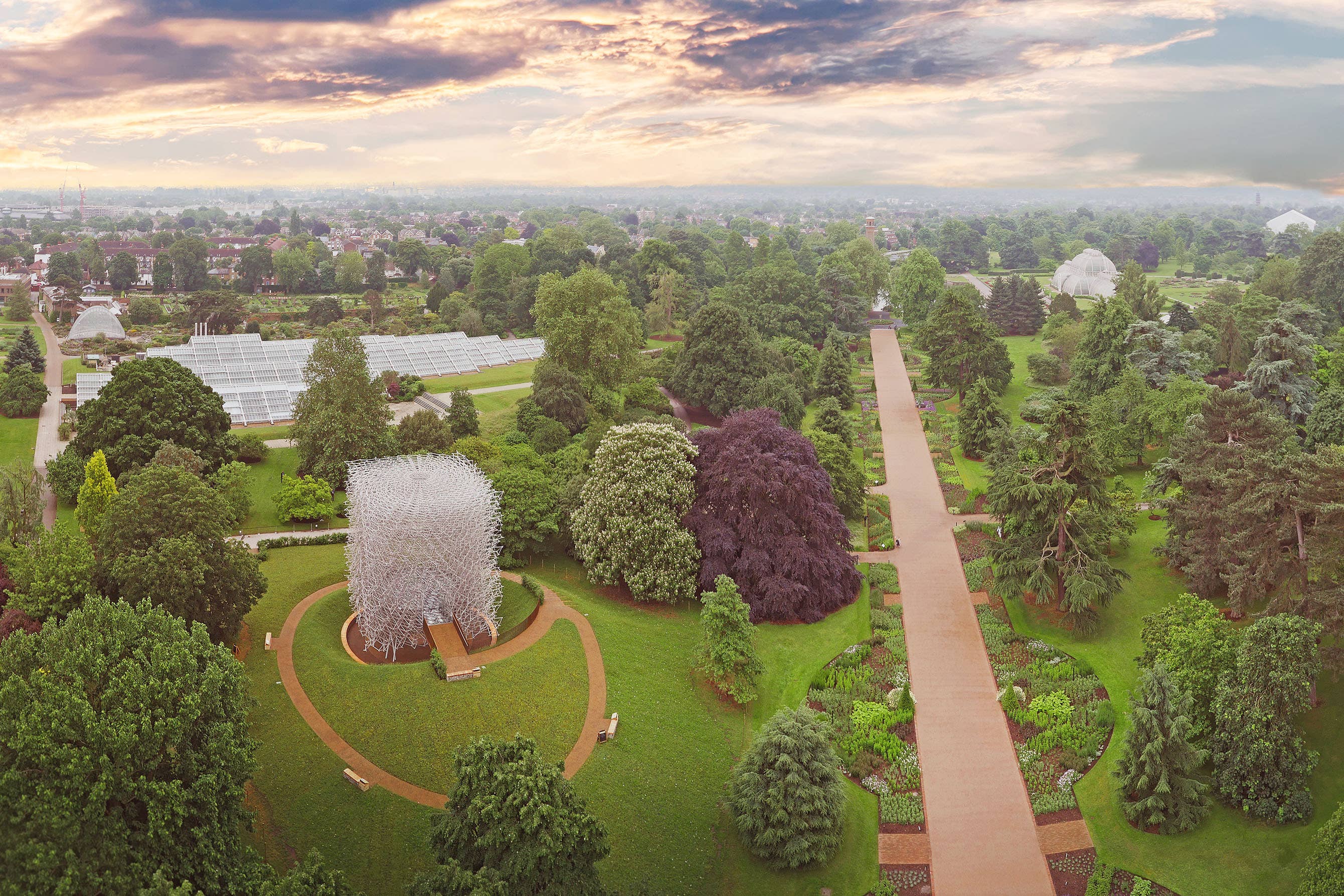Half of Kew Gardens’ trees may be at risk by 2090 as climate warms – study
A report has suggested many native trees could be at risk because of the changing climate and recommends planting new species better able to adapt.

More than half of the 11,000 trees at London’s Kew Gardens could be at risk by the late 21st century as the climate changes, a report has warned.
The report by the Royal Botanic Gardens, Kew (RBG Kew) was spurred on by the drought of 2022 which saw the loss of more than 400 trees at the 320-acre gardens in west London – compared to an average of 30 lost most years.
Climate change is bringing rising temperatures, more summer drought and other weather extremes, with London’s climate in 2050 expected to be comparable to present-day Barcelona.
The report used modelling to assess how well species are adapted to a given climate and how that might change over time, to determine the trees which need to start being planted in the UK now to protect landscapes for future generations.
The results reveal that under a scenario in which temperatures at Kew rise by 4C, more than 50% of the garden’s tree species could be vulnerable as the climate changes out of, or to the edge of, their known range by 2090 – within the lifetime of most trees.
Alternative modelling, which combines moisture and annual temperatures more conservatively, suggests a third of Kew’s trees may be vulnerable by 2090.
Under both scenarios, native trees such as English oak, common beech, silver birch and holly could be at risk in the UK in areas that will have a similar climate to Kew.
Experts at Kew warn that gardens and urban planners need to prioritise planting resilient species as existing trees die to cope with the future climate.
It is a broad call to diversify the plants we select for our landscapes
These could include: Farges’ fir and Iberian alder, native to Portugal and Spain; the cherry hackberry which comes from China, Myanmar and Tibet; the Montezuma pine from Central America; and Mexico’s spoon oak, which are shown to be species that should withstand the projected conditions.
The experts warn there is an urgent need for “succession planting” nationally as trees and woody shrubs act as “nature’s air conditioning”, managing the effects of urban heat islands where cities are hotter than the surrounding area.
But their long lifespan means they cannot adapt easily to such a rapidly changing climate, and many of the trees currently being planted in the UK are failing, botanists warn.
In some good news for Kew’s collection, all of the “Old Lions”, five of the oldest trees in the garden, are expected to thrive even in the worst-case climate scenario.
These trees, none of which are British natives, were planted in the mid 1700s when Princess Augusta created a nine-acre botanic garden at Kew.
And certain species in the collection are shown to be resilient if they are sourced from areas within their geographic range which have similar climates to that predicted for Kew’s future.
These include European oak and beech, which have developed altered traits as a result of genetic variation within species that could enable them to have better resilience to conditions such as drought.
Richard Barley, director of gardens at RBG Kew, said the report was a crucial step towards understanding the effects of the projected climate on “living landscapes”, enabling changes that would make them more resilient.
He said: “This is not just about Kew Gardens though; it is a broad call to diversify the plants we select for our landscapes.
“By focusing on resilience and adaptability we hope to show it is possible to mitigate the severe impacts of climate change in both urban spaces and gardens such as Kew.”
Tom Freeth, head of living collection support at Kew, added they hoped others could use the report as inspiration, and revise and improve it where necessary.
“Fundamentally, we want to raise awareness of what we’re likely to experience over the next 100 years, which will be profoundly different to what we have experienced in the past and showcase some of the steps we can take to address a rapidly changing climate,” he said.
Bookmark popover
Removed from bookmarks